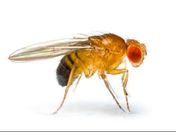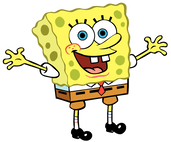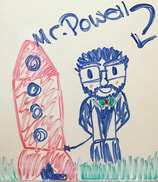 One of the most famous model organisms in the field of genetics is Drosophila melanogaster better known as the common fruit fly. Through his work with fruit flies Thomas Hunt Morgan made many discoveries about how genes interact as well as how certain traits can be sex-linked (appearing only on one type of sex chromosome). In class we did our own work with fruit flies using an interactive digital lab. Click on the fruit fly to go to the digital lab. GOLD TAPE QUESTION (Activity)This week's GTQ is actually an activity. Your task is to extract DNA at home. Follow the directions in the attached pdf or just follow along with this video then take a picture of yourself with your lab materials and your extracted DNA (you can be creative with how you take the picture) You will receive 2 pieces of gold tape for your picture/pictures and an additional piece of gold tape for a written conclusion to your lab. You can write about what you learned, what worked or what didn't, and how you think this technique might have additional uses other than just being a fun at home science activity. Good luck! Ask/Check with your parents before you do this activity and always wear safety glasses and use safe lab procedures
0 Comments
Congratulations on completing your first genetics quiz. We will begin learning new material tomorrow!
Tomorrow's quiz will be about DNA, Genes, and Alleles; Punnet Squares, and Incomplete and CoDominance. Use the video playlist below to help you study for the quiz.
Gold Tape Question: This week's Gold Tape question is worth two pieces of Gold Tape! Turn in your work on Monday or send a picture of it to [email protected]
Question: In Sponges Yellow (Y) is dominant to blue (y) and Square (S) is dominant to round (s). SpongeBob is heterozygous for his yellow color and square shape (YySs) and SpongeSusie is heterozygous for her yellow color and round (Yyss). Use a dihybrid cross to determine the phenotype and genotype percent (or ratio) possibilities of all offspring.
In class today we finished our origami genes and also added to our genetics vocabulary list. Understanding the language of genetics is essential to being able to really understand how genetics work and make predictions about the genetic make up of organisms. Here are the words we added today.
Hybrid: Offspring receiving different alleles from each parent Dominant: The form of an allele that covers up the other form of an allele Recessive: The form of an allele that is covered up by the dominant allele Genotype: refers to the genetics make up of an organism (represented by pairs of letters TT, Tt, tt) Phenotype: The physical traits of an organism, more simply what an organism looks like (Tall, short) Homozygous: a pair of alleles that are the same AA, aa, BB, bb Heterozygous: When a pair of alleles are different Aa, Bb, Cc
Gold Tape Question: Where was George Beadle born and what is his famous scientific discovery that has to do with genes?
|
AuthorMr. Powell is a High School Science Teacher in Western Colorado. Archives
May 2024
Categories
All
|
||||||||||||||||||||||||||||||||||


 RSS Feed
RSS Feed